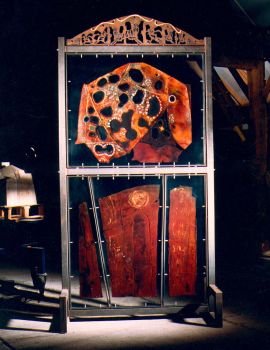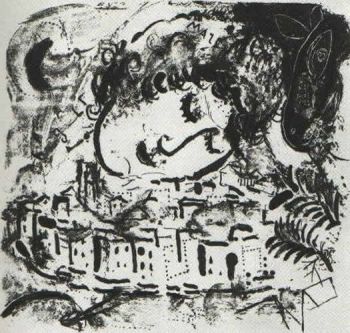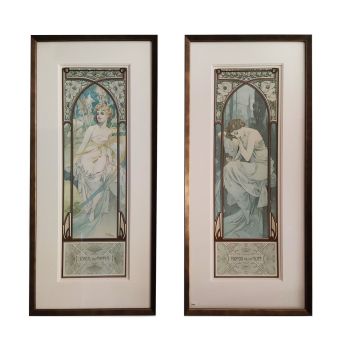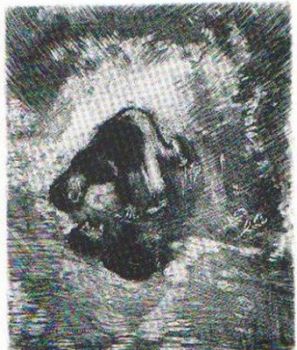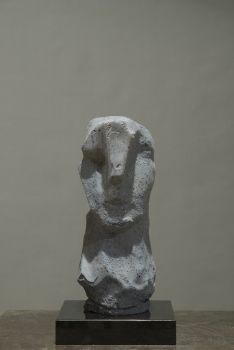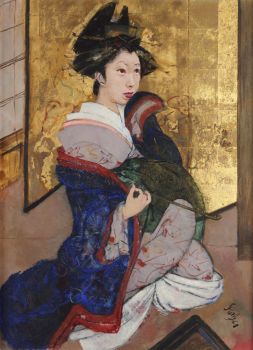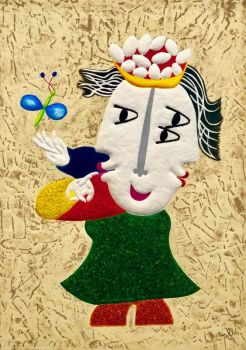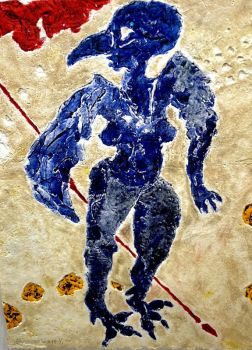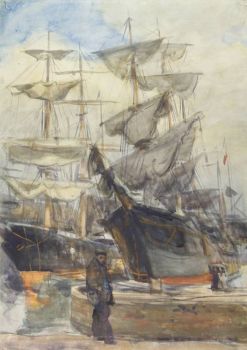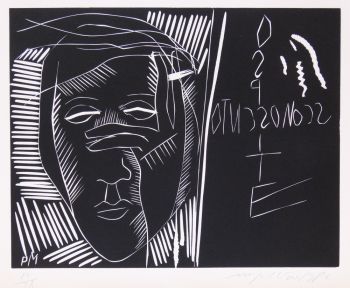Futurism A Movement Shaping more than only Modern Art
Welcome to the realm of Futurism, a dynamic movement that emerged in the early 20th century, defying conventional artistic norms and embracing the vibrancy of modern life. With an unwavering focus on speed, technology, and the boundless possibilities ahead, Futurism sparked an era of innovation that left an indelible mark on the trajectory of modern art. Let us embark in this article on a captivating journey through the evolution of this influential artistic movement and the influence futurism had on the artistic world.
Origins and Manifesto
In the early 20th century, a group of Italian artists emerged with a radical vision that would shape the course of modern art. This movement, known as Futurism, originated in Italy when poet Filippo Tommaso Marinetti published his "Futurist Manifesto" in 1909.
Marinetti's manifesto, published in the French newspaper Le Figaro, called for a rejection of the past and a new aesthetic that embraced the possibilities of the future.
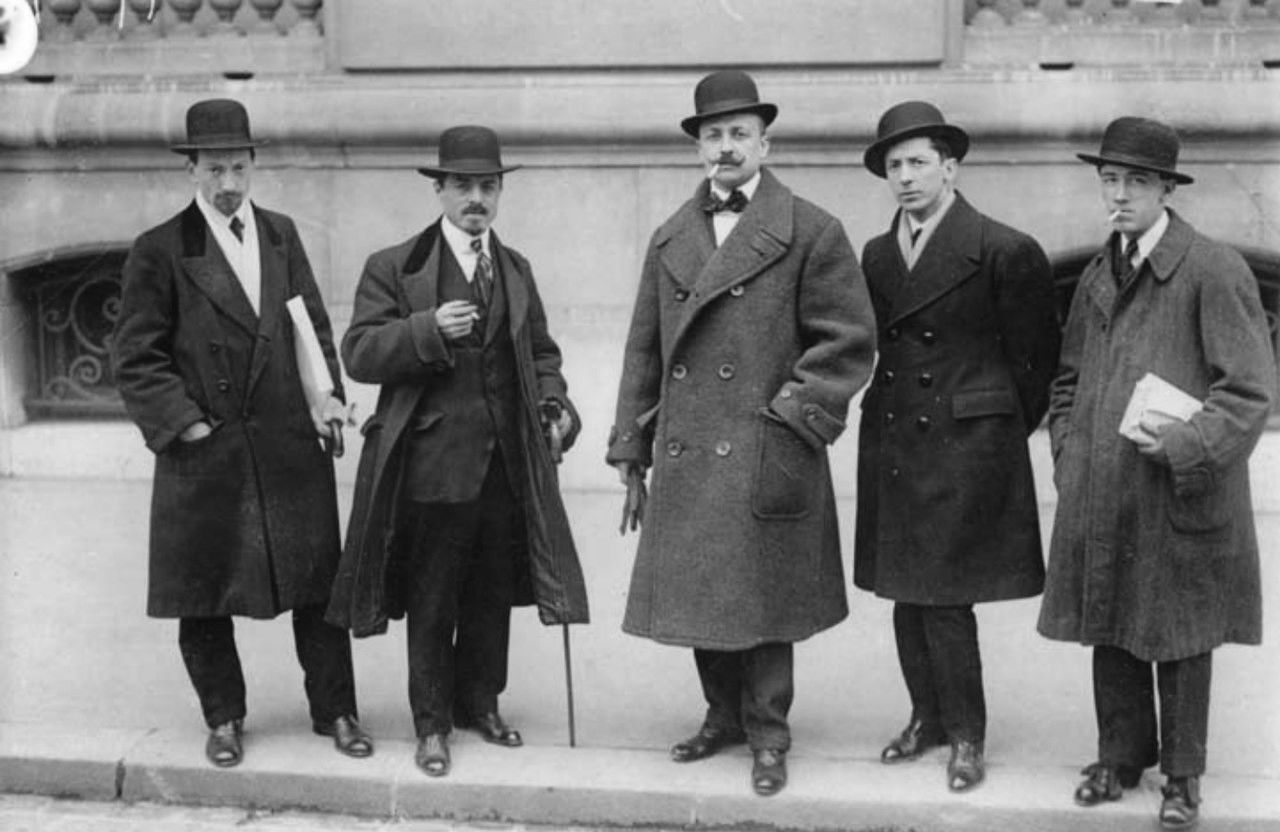 Italian futurists Luigi Russolo, Carlo Carrà, Filippo Tommaso Marinetti, Umberto Boccioni and Gino Severini in front of Le Figaro, Paris, February 9, 1912
Italian futurists Luigi Russolo, Carlo Carrà, Filippo Tommaso Marinetti, Umberto Boccioni and Gino Severini in front of Le Figaro, Paris, February 9, 1912
The Meaning and Characteristics of Futurism
Futurism sought to capture the dynamism and energy of the rapidly changing world. The movement embraced technology, industry, and the speed of modern life.
Futurists celebrated the technological advancements of their time, including the invention of the automobile and the airplane. They sought to capture the speed, energy, and power of these machines in their art.
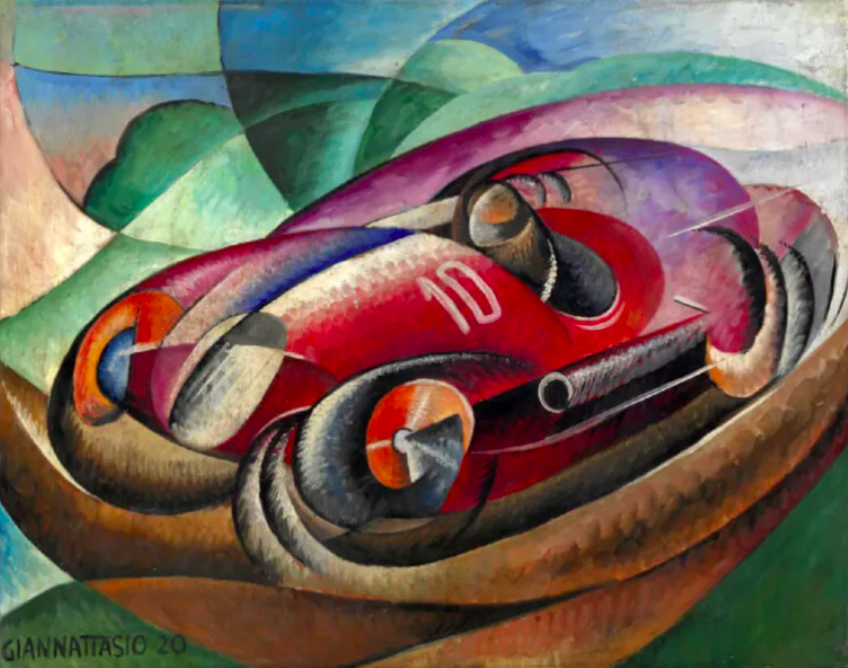 A futurism painting of a car by Ugo Giannattasio, Untitled, 1920
A futurism painting of a car by Ugo Giannattasio, Untitled, 1920
Futurist artists aimed to free art from traditional constraints and used a visual language characterized by speed, movement, and fragmented forms. They celebrated violence, war, and aggression, viewing them as means to disrupt societal norms and create a new order.
Prominent Artists of Futurism
Several artists played significant roles in the Futurist movement. Umberto Boccioni, Giacomo Balla, Gino Severini, and Carlo Carrà were among the notable figures associated with Futurism.
Umberto Boccioni was an Italian painter and sculptor known for his dynamic and fragmented compositions. He shaped the movement's aesthetic with his iconic sculpture "Unique Forms of Continuity in Space."
This sculpture embodies the Futurist ideal of movement and dynamism, depicting a streamlined human figure striding forward.
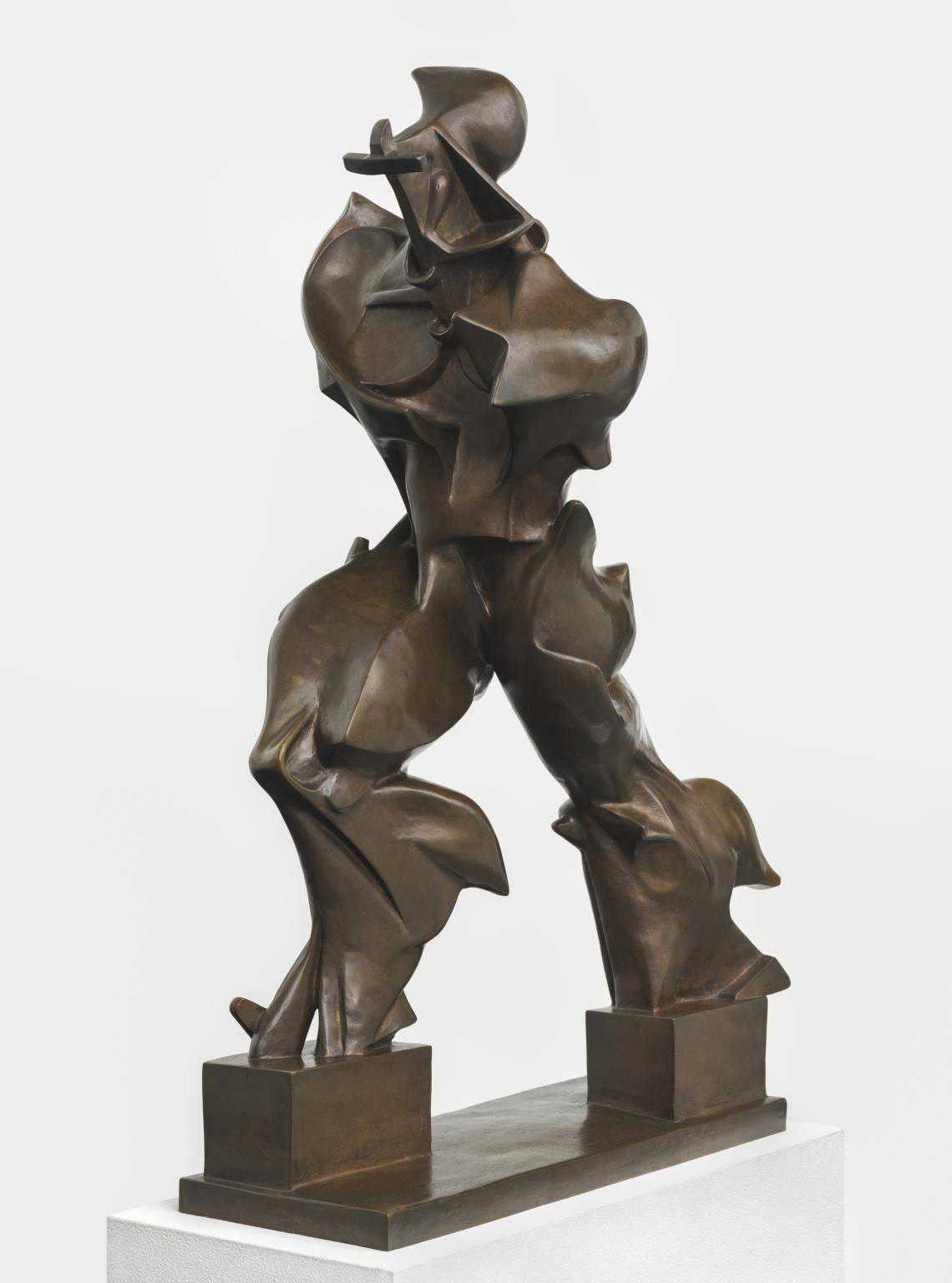 Futurism, Umberto Boccioni, Unique Forms of Continuity in Space (1913, cast 1972), Tate
Futurism, Umberto Boccioni, Unique Forms of Continuity in Space (1913, cast 1972), Tate
Gino Severini often combined fragmented brushwork with the representation of movement to capture the energy of modern life. He often depicted urban scenes, machinery, and dance, exploring the intersection of technology, art, and human experience.
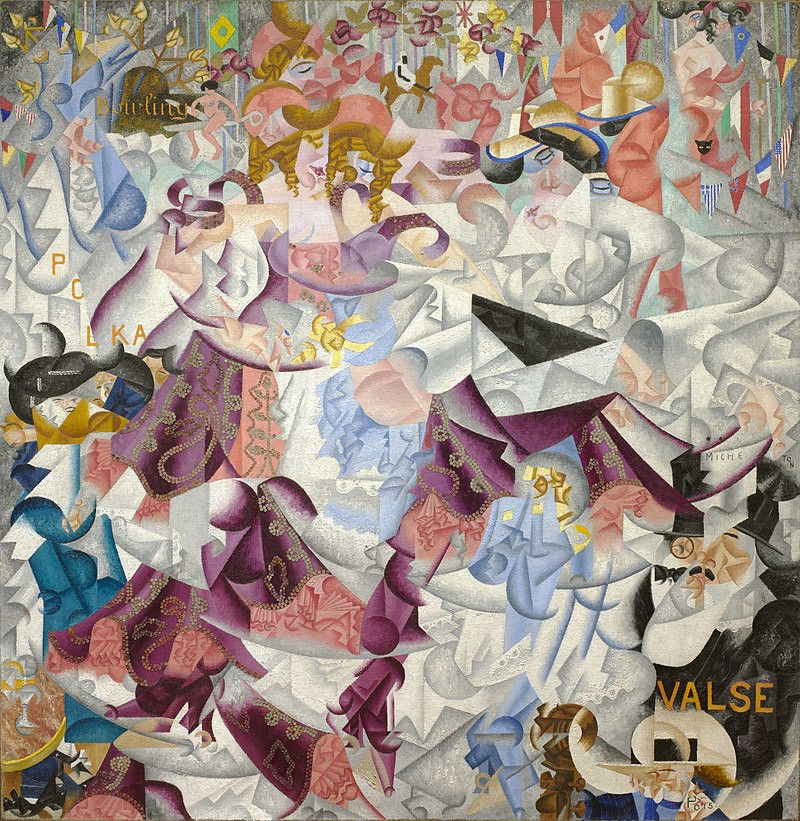 Futurist Gino Severini, 1912, Dynamic Hieroglyphic of the Bal Tabarin, oil on canvas with sequins
Futurist Gino Severini, 1912, Dynamic Hieroglyphic of the Bal Tabarin, oil on canvas with sequins
Carlo Carrà paintings blended elements of cubism and futurism, depicting fragmented forms and dynamic compositions that celebrated the industrial progress and technological advancements of the early 20th century.
Giacomo Balla was an Italian painter, was fascinated by light and motion. He created paintings known as "dynamism," which captured the essence of movement through the depiction of multiple, overlapping images.
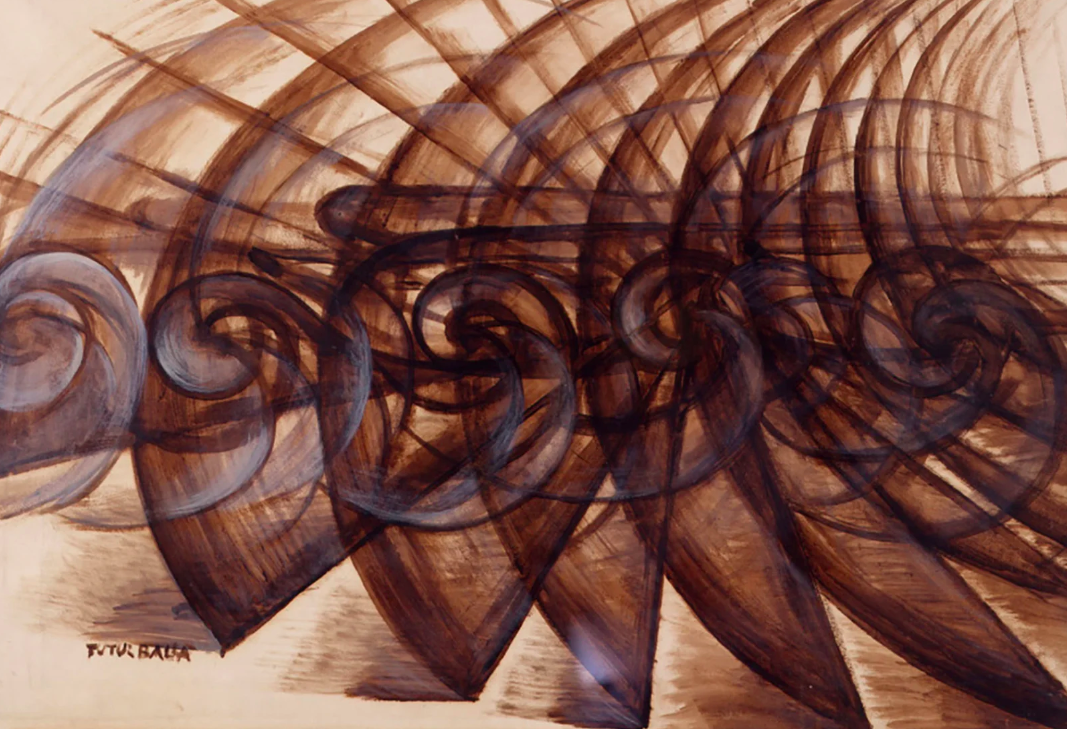 Painting by futurist artist Giacomo Balla, Velocità di motocicletta, 1913
Painting by futurist artist Giacomo Balla, Velocità di motocicletta, 1913
Futurism's Contribution to Modern and Visual Art
Futurism's impact on modern art is profound. In painting, futurism inspired new forms and techniques such as the use of bold, dynamic forms and the incorporation of movement and energy into art.
Its embrace of technology, urbanization, and the industrial age laid the groundwork for subsequent art movements, such as Art Deco, Cubism, Surrealism, Abstract Expressionism, Constructivism and Dadaism
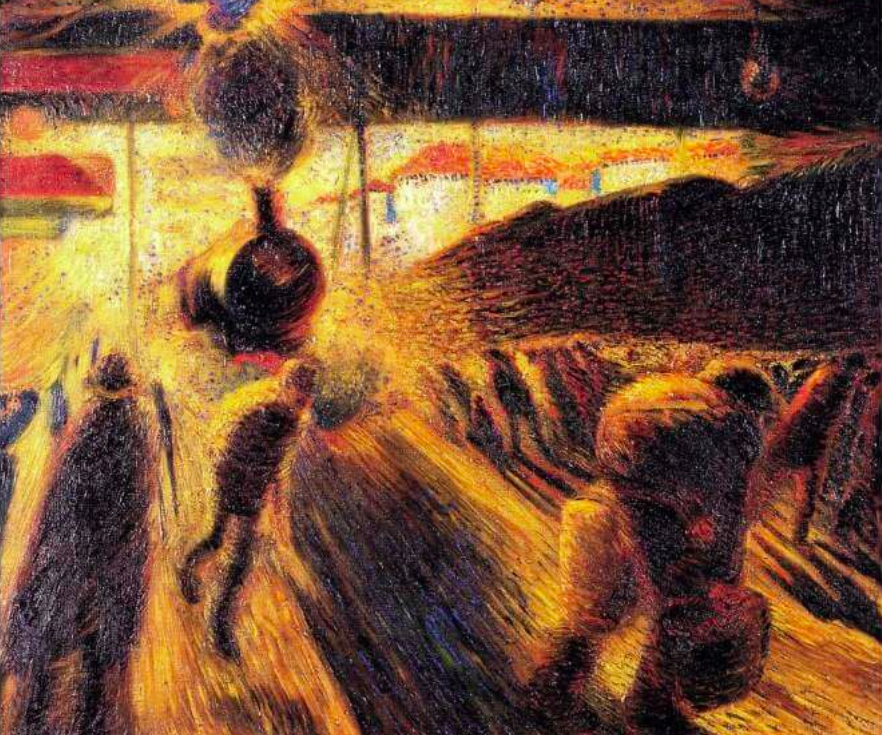 Futurism speed displayed in the painting 'La stazione di Milano' by Carlo Carrà, 1910-11
Futurism speed displayed in the painting 'La stazione di Milano' by Carlo Carrà, 1910-11
The influence of Futurism on other art forms
Futurism's influence extended beyond visual art, inspiring writers, musicians, architects and graphic design/ advertising to incorporate its principles into their respective disciplines.
- In literature, futurism influenced writers who sought to create a new literary language that was uniquely modern.- In music, futurism inspired new forms and techniques such as the use of dissonance and unconventional rhythms.
- In architecture, futurism inspired the development of new styles such as the International Style, which sought to create a new form of architecture that was efficient, functional, and modern.
- Futurism also had a significant impact on graphic design and advertising, inspiring new forms and techniques such as the use of bold, dynamic typography and the incorporation of movement and energy into design.
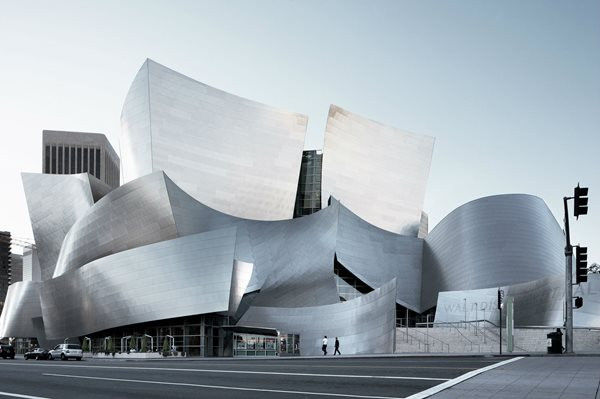 Example of 'neo-futuristic architecture', Frank Gehry‘s iconic Walt Disney Concert Hall, 1999 and 2003
Example of 'neo-futuristic architecture', Frank Gehry‘s iconic Walt Disney Concert Hall, 1999 and 2003
Futurism and facism
The back side of futurism was that futurism played a significant role in the support of fascist sentiments. The agitational propaganda and the crowd-stirring spectacle of futurism artists were almost a model for the fascists like Mussolini. He adopted many ideas and influences of Marinetti’s innovations in his performances and public speeches.
Nationalism, militarism, irrational violence and a general aestheticization of violence appeared in both futurists’ and Fascists’ propaganda. The literary genre and narrative form of a manifesto has been used before by the artists, but the members of Futurism used it as a political weapon.
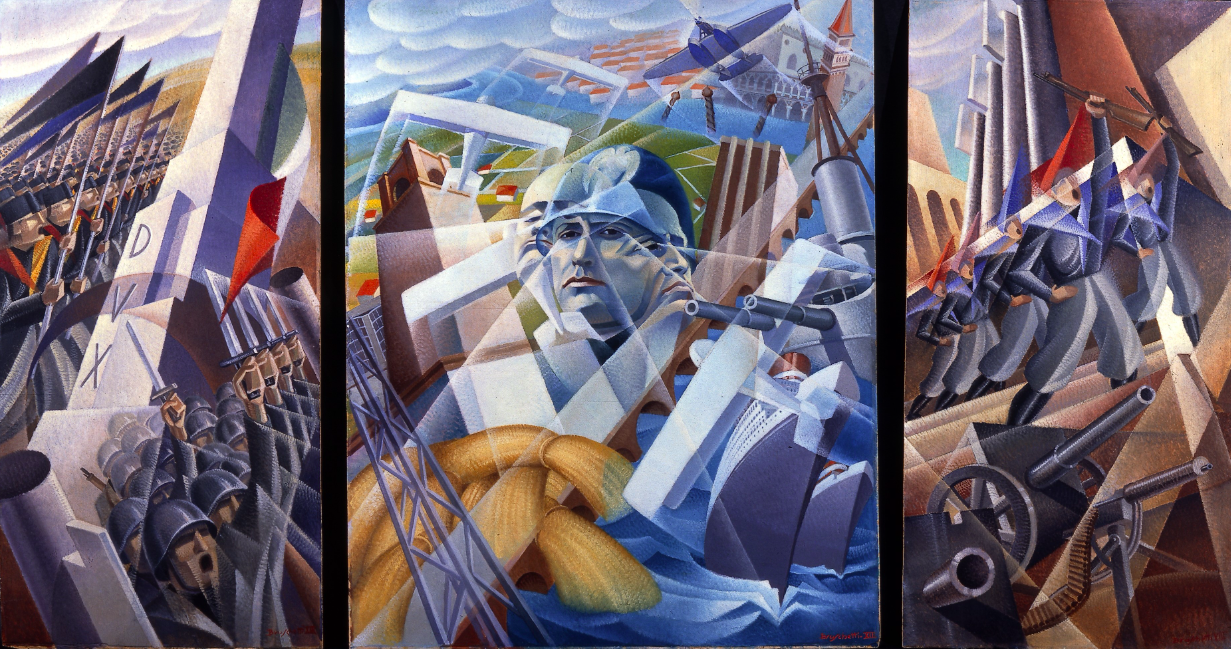 Futuristic artwork titled 'Sintesis Fascista' by Allessandra Bruschetti shows the support on Mussolini and this militaristic plans, 1935
Futuristic artwork titled 'Sintesis Fascista' by Allessandra Bruschetti shows the support on Mussolini and this militaristic plans, 1935
Resume
Futurism emerged as a groundbreaking movement, challenging traditional artistic norms and embracing the possibilities of the future. Its emphasis on speed, technology, and the dynamism of modern life reshaped the course of modern art.
Futurism and fascism shared many rhetorical similarities (the glorification of war and violence, the primacy of Italian identity) I can be said that that the art-form futurism was used by Marinetti and Mussolini as a tool to promote the proto-Fascist movement.
Where to buy original futurism art?
Here at Gallerease, we only offer high-quality, curated art from the best galleries. Take a look at our platform to discover simple art that suits you.


